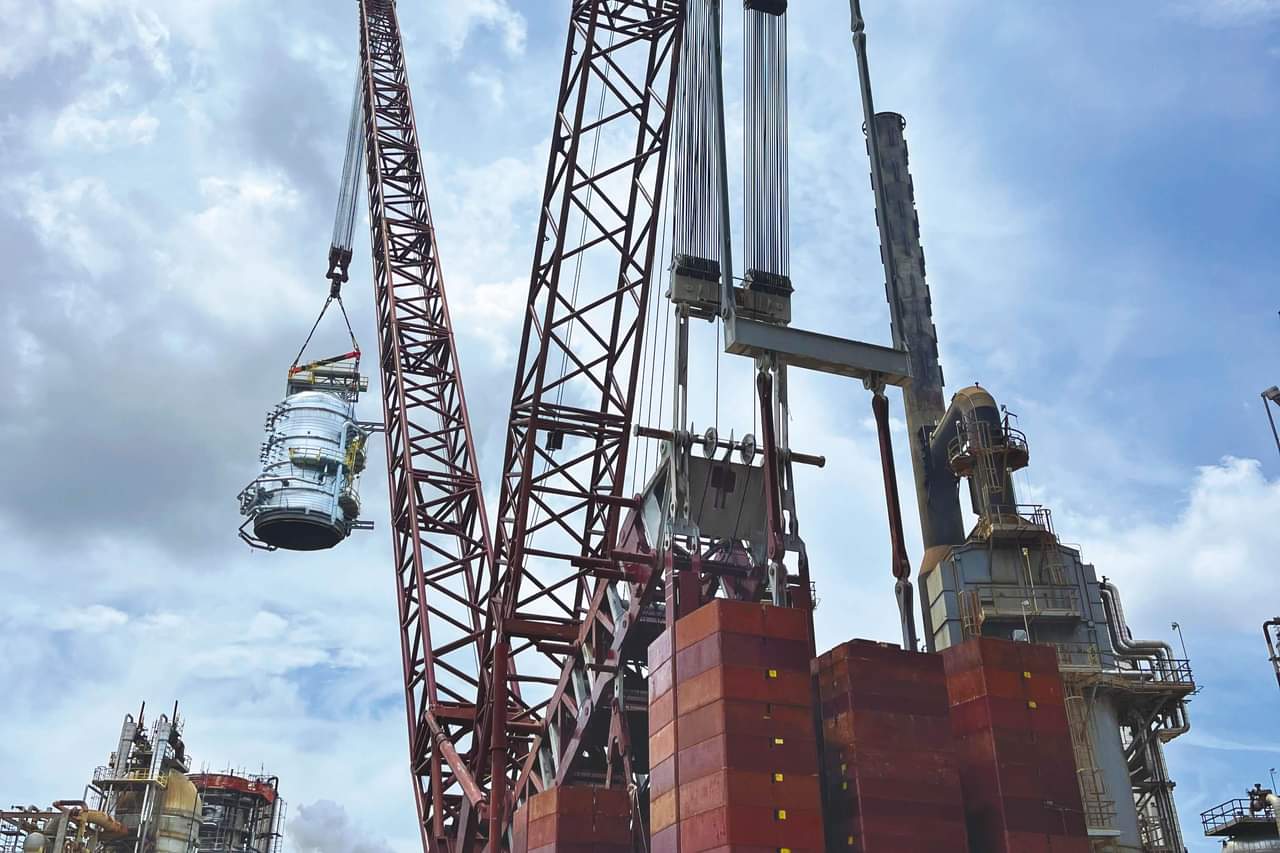News
Safety Source : The Fire Tetrahedron
Posted: 10/19/2023
The Fire Tetrahedron: The Four Pillars of Fire
The National Fire Protection Association (NFPA)
is a leading authority on the fire tetrahedron and offers an in-depth explanation on its website. We've condensed the key insights from the NFPA about the fire tetrahedron for your reference.
The captivating nature of fire has fascinated humanity for generations, and behind its beauty lies the scientific principle of the fire tetrahedron.
Fire is not, in fact, a substance. When you gaze at the leaping flames of a campfire, you’re observing not an object, but a process – a chemical reaction. It’s the same chemical reaction that occurs when a cut apple left on the counter turns brown, when silver tarnishes or when an iron nail rusts.
That process is oxidation: combining oxygen with another substance. The defining difference between a fire and your half-eaten apple is speed: fire is an oxidation process that happens very fast, so that light, heat and sound are released — often with enough force and majesty to justify the ancients’ reverence.The sudden release of energy causes temperatures to rise, sometimes by thousands of degrees. And it also results in smoke, the toxic waste of fire’s leftovers.
Introducing the Fire Tetrahedron
The fire tetrahedron represents the four indispensable elements required for a fire:
Fuel: A substance that can burn.
Heat: The trigger that ignites the fuel.
Oxygen: Air that sustains combustion.
Chain Reaction: The continuous cycle where heat from flames further ignites the fuel.
Fire will burn until one or more of the components are removed. Traditional fire extinguishing methods involve removing the fuel, heat, or oxygen.

The Dynamics of Fire
Stages of Fire: From its ignition, where fuel, oxygen, and heat combine, fire can escalate rapidly, consuming more energy and reaching peak temperatures. It then decays as the fuel depletes.
How Fire Spreads: Through direct contact (Conduction), moving hot air (Convection), and heat radiation (Radiation).
Quenching a Fire: To effectively put out a fire, one must address the components of the fire tetrahedron. Here's how to tackle each element:
Cool the burning material: This reduces the heat, making it harder for the fire to sustain.
Exclude oxygen: Without oxygen, the fire can't continue to burn.
Remove the fuel: If there's nothing to burn, the fire can't persist.
Break the chain reaction: This disrupts the continuous cycle, stopping the fire's progress.
Note on Fire Classification
While the tetrahedron offers a deep understanding, it's vital to recognize that fires are categorized based on fuel type. This classification helps determine the proper response to diverse fire situations.
Final Thoughts
The fire tetrahedron is fundamental to understanding the mechanism and behavior of fires. Recognizing its components enhances our knowledge and empowers us with the strategies to combat fires effectively.
Sources: NFPA.org , Praxis42.com
---
Our industry takes pride in advancing safety in all aspects of life. Deep South Crane & Rigging, LLC's marketing team has prepared this content with the intent that it be shared as potential safety topics used to start meetings industry-wide. We have used internet resources that are sourced via links throughout the article. We do not claim to be experts on this topic.
Precarious Conditions on the Dock
Posted:05/13/2025
Rail-traveling ship loaders are a familiar sight on the Gulf Coast (and around the world)—and they are essential to the efficient loading of bulk materials. Disruption to the operation of these massive machines directly affects productivity and the bottom line, as represented by one company's experience when wind from a severe storm knocked the machine off its rails, leaving it dangerously close to the edge of the dock.
Reconfigured for a Higher Load
Posted:11/05/2024
During a planned outage, a petrochemical facility in Texas needed to replace a large tower head—measuring 54' L x 30' W x 30' H and weighing 280,000 pounds. Deep South Crane & Rigging selected a strategic setup location for its 2,500-ton VersaCrane TC-36000 to accommodate both the head lift and additional turnaround work. The lift was initially planned at 350,000 pounds, accounting for tray installation.

